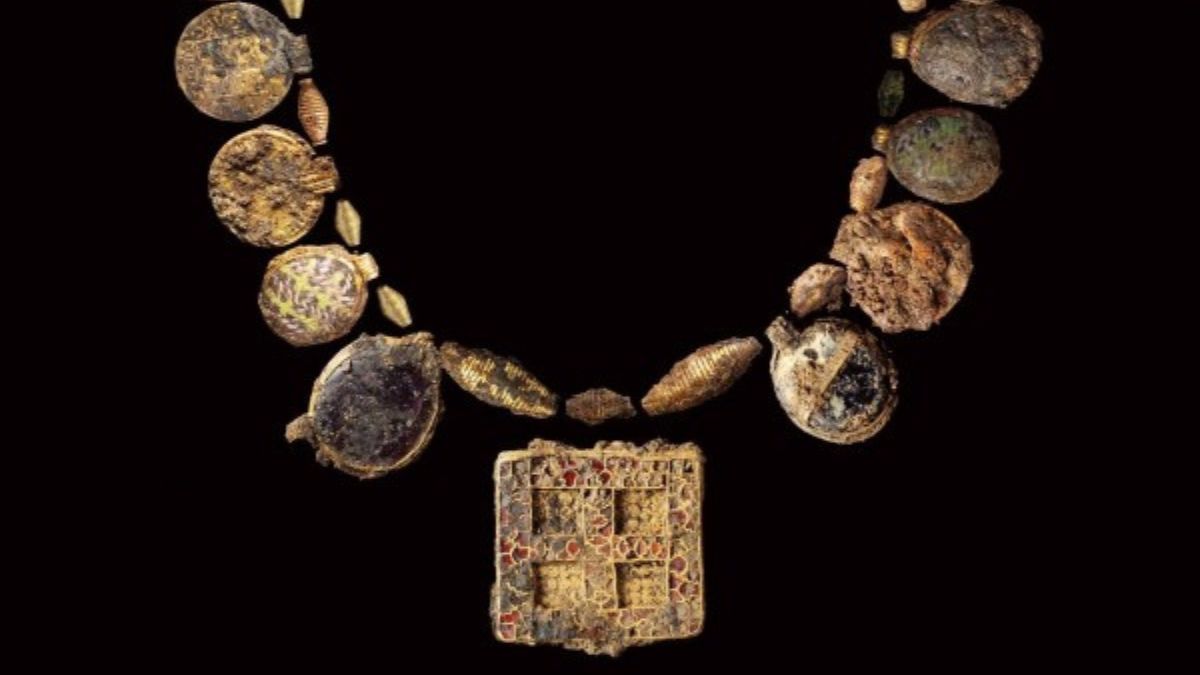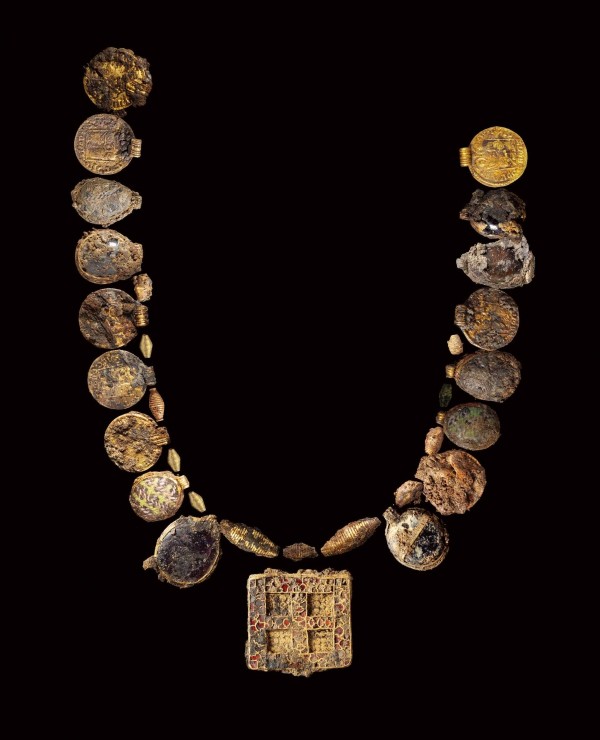Researchers in England discovered a very rare necklace made of gold and gemstones that dates back 1,300 years
December 07, 2022 By Raulf Hernes

(Image Credit Google)
 According to scholars, this is the most significant female burial from the time period to have been discovered in Britain.
Also Read: Experience being buried alive only for $57K
Based on the name of the nearby parish where the discovery was discovered, it has been given the moniker "Harpole Treasure."
The necklace's focal point, a rectangular pendant with a cross design composed of red garnets and gold, is the largest and most elaborate part of the discovery. According to MOLA experts, it was formerly a hinged clasp that was reused.
The tomb also contained two decorated pots and a shallow copper dish. After x-rays were analyzed on pieces of earth retrieved from the grave, a lovely and elaborately decorated crucifix with unusual depictions of human faces cast in silver was found.
The woman may have been a significant early Christian figure, according to this substantial and ornate artefact, which the MOLA Conservators are currently micro-excavating from the mud blocks.
However, the burial goods as a whole indicate that this was a high-status woman, whether royalty or an abbess—or even both.
According to scholars, this is the most significant female burial from the time period to have been discovered in Britain.
Also Read: Experience being buried alive only for $57K
Based on the name of the nearby parish where the discovery was discovered, it has been given the moniker "Harpole Treasure."
The necklace's focal point, a rectangular pendant with a cross design composed of red garnets and gold, is the largest and most elaborate part of the discovery. According to MOLA experts, it was formerly a hinged clasp that was reused.
The tomb also contained two decorated pots and a shallow copper dish. After x-rays were analyzed on pieces of earth retrieved from the grave, a lovely and elaborately decorated crucifix with unusual depictions of human faces cast in silver was found.
The woman may have been a significant early Christian figure, according to this substantial and ornate artefact, which the MOLA Conservators are currently micro-excavating from the mud blocks.
However, the burial goods as a whole indicate that this was a high-status woman, whether royalty or an abbess—or even both.
Leave a Reply

Apple's iOS 18: A Leap into the AI Era
March 12, 2024

Google's Regular Pixel 8 Won't Get Gemini Nano AI
March 12, 2024

MacBook Air M3 Makes Amends for M2's Storage Blunder
March 11, 2024

Samsung Unveils the Galaxy M15 5G
March 11, 2024

Elon Musk's xAI to Open-Source Chatbot Grok
March 11, 2024

Contra: Operation Galuga - A Modern Run-and-Gun Classic
March 11, 2024

Musk Confirms X's TV App Arrives This Week
March 11, 2024
RELATED NEWS
2
3
4
5
6
7
8
9
10



